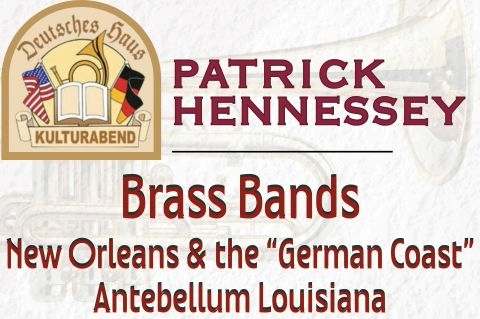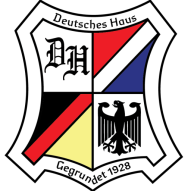
Kulturabend
Patrick Hennessey
Dr. Patrick Hennessey possesses a wide breadth of experience as a professional musician, educator and ensemble director. A native of New
Orleans with extended residences in Southern California, Hawai’i and Florida, Dr. Hennessey's professional experience as a trombonist spans the gamut from jazz combos to the opera pit to sideman for renowned entertainers, and everything in between.
An experienced and versatile educator, Dr. Hennessey led the jazz ensemble program at the University of Hawai’i to national acclaim during his tenure prior to accepting the position of Director of Bands at Hawai’i Pacific University, where he has also taught courses in jazz studies, music history, music theory and world music. In 2013 he accepted a position at Stetson University School of Music, where he served as the Director of the Stetson University Jazz Ensemble and Assistant Director of Bands while also teaching courses in jazz history and music history. During the same period, Dr. Hennessey also stayed active as the director of the Space Coast Jazz Orchestra, a professional musical organization while continuing to guest conduct and freelance as a professional trombonist and scholar.
Upon retiring, he moved back to his birthplace and is honored to serve as the conductor of the American Legion Post 350 Band while also having the privilege of guest conducting the New Orleans Concert Band.
Dr. Hennessey earned his Ph.D. in musicology, writing his dissertation on Henry Berger (1844-1929), the legendary bandmaster of the Royal Hawaiian Band. Die Internationale Gesellschaft zur Erforschung un
Förderung der Blasmusik (IGEB – The International Society for the Research and Promotion of Wind Music) selected his scholarly work for the 2010 Fritz Thelen Prize, honoring their choice as the most outstanding dissertation globally on the topic of wind bands. Maintaining active membership in numerous professional and musicological organizations, Dr. Hennessey has presented his research both nationally and internationally and has published in the Journal of Band Research, the New Grove Dictionary of American Music Online, and Alta Musica.Patrick Hennessey, Ph.D. Conductor, Musicologist, Professional Musician, Retired Educator
Brass Bands, New Orleans and the “German Coast”
Antebellum Louisiana
The city of New Orleans has long been associated with fine cuisine, European-influenced architecture, and a diverse musical culture. Located in southeastern Louisiana, near the mouth of the mighty Mississippi River, New Orleans was a major port city for exporting and importing goods for a fledgling nation. Its growing industry and booming economy also led to the city becoming a primary target for foreign immigrants. Today, New Orleans remains one of the most culturally and ethnically diverse cities in the United States, and it's uniqueness was once highlighted by Tennessee Williams, when he wrote: “America has only three cities: New York, San Francisco, and New Orleans.
Everywhere is Cleveland.”
Just three years after the city’s founding by the French Mississippi Company, under the direction of Jean-Baptiste Le Moyne de Bienville, a large contingent of immigrants from Germany arrived in New Orleans in 1721 via John Law and the Company of the Indies. They established an upriver farming community, spanning the parishes of St. Charles, St. John the Baptist, and St. James, commonly referred to as the German Coast, or the Cote des Allemands.
Despite initial and some ongoing difficulties, the German community forged onward, with German immigration peaking in the 1850s. Many now settled in and around the city of New Orleans, which afforded them greater opportunities, including access to one of the most eclectic entertainment centers in the country. Even by the middle of the nineteenth century, New Orleans was an inordinately musical city, hosting quadroon balls, operatic and theatrical performances, public concerts, and brass bands of all kinds.
This study researches the musical activities related to the German community in New Orleans with particular focus on the brass bands of two
German immigrants, Charles Bothe and Charley Jaeger. They led two of the non-military bands in the area during the 1850s and were considered to be the most active of the German brass band leaders. Focus on Bothe and Jaeger includes their careers in general in addition to their music repertoire, concert programming, and primary activities. Evidence suggests that Bothe and Jaeger were important cogs in the complex fabric of New Orleans music and culture during a vital transitional period for the brass band idiom in both antebellum and postbellum New Orleans.
Tuesday, November 18th
Doors open at 4:00 / Program starts at 7:00
Free and Open to the Public
This is sponsored by the German-American Cultural Center of Gretna and the Ladies Auxiliary of the Deutsches Haus.

